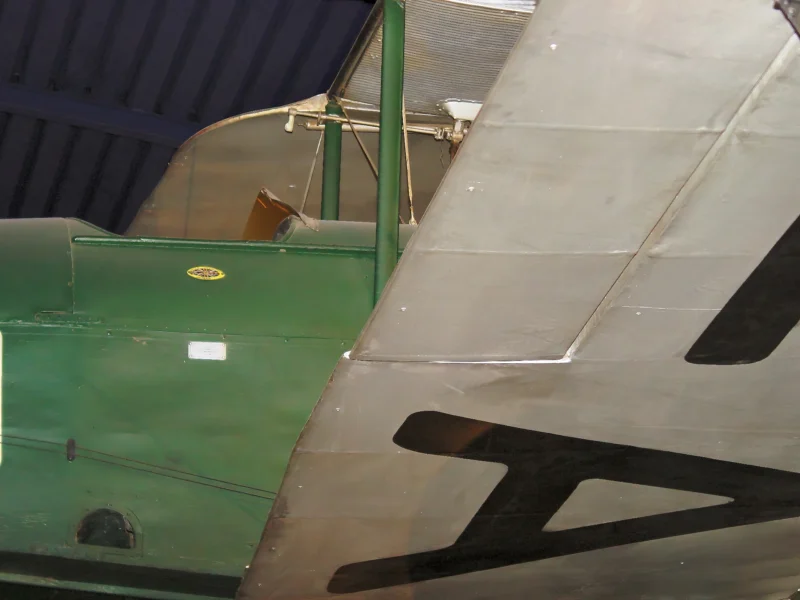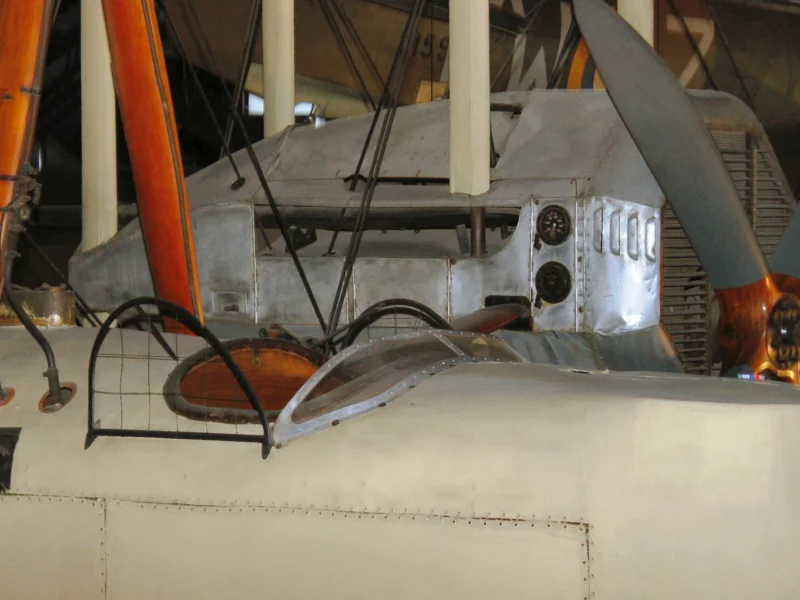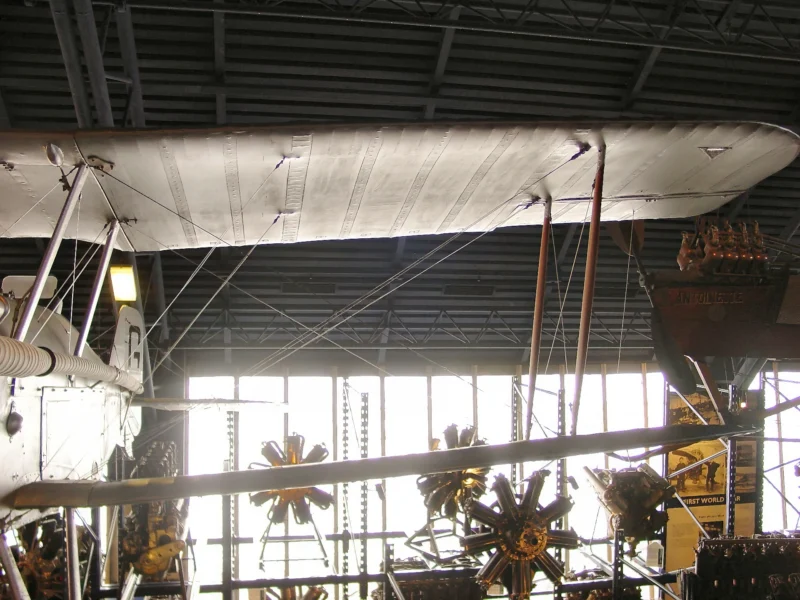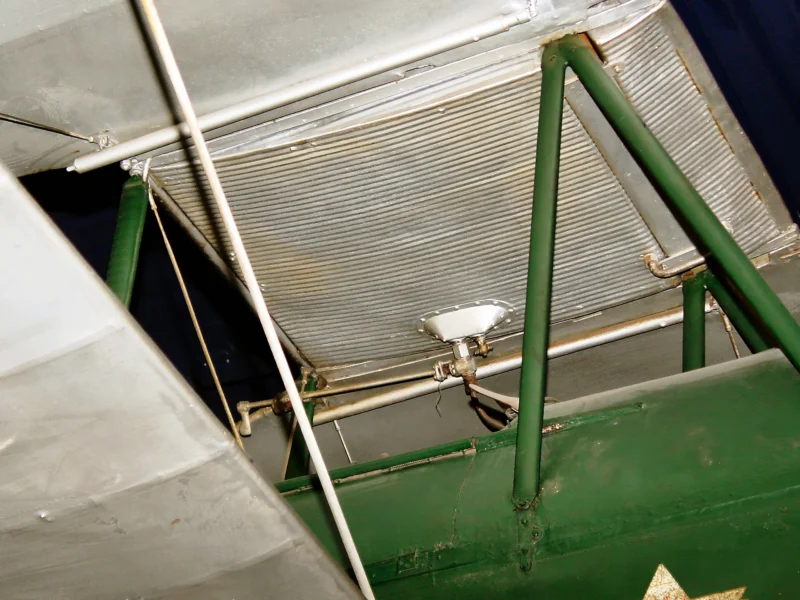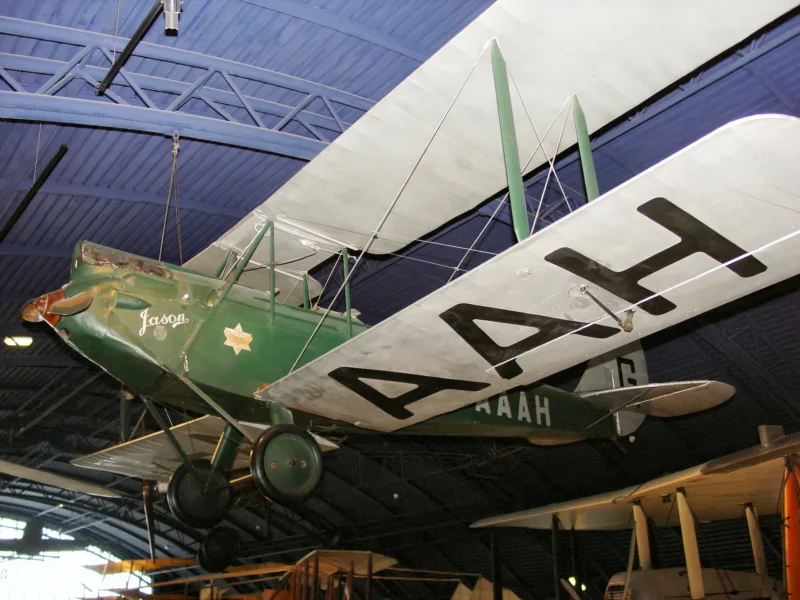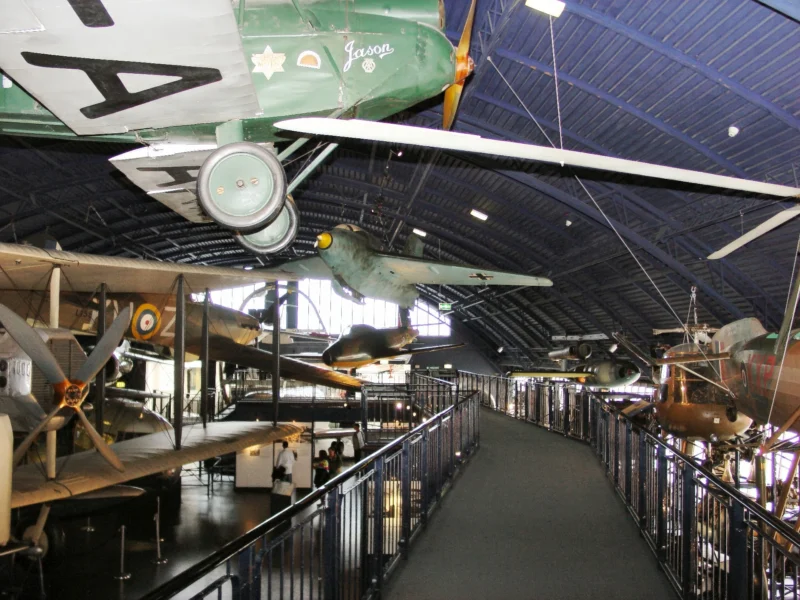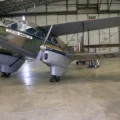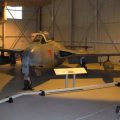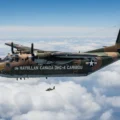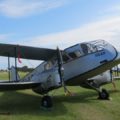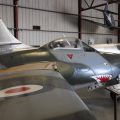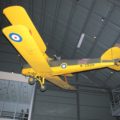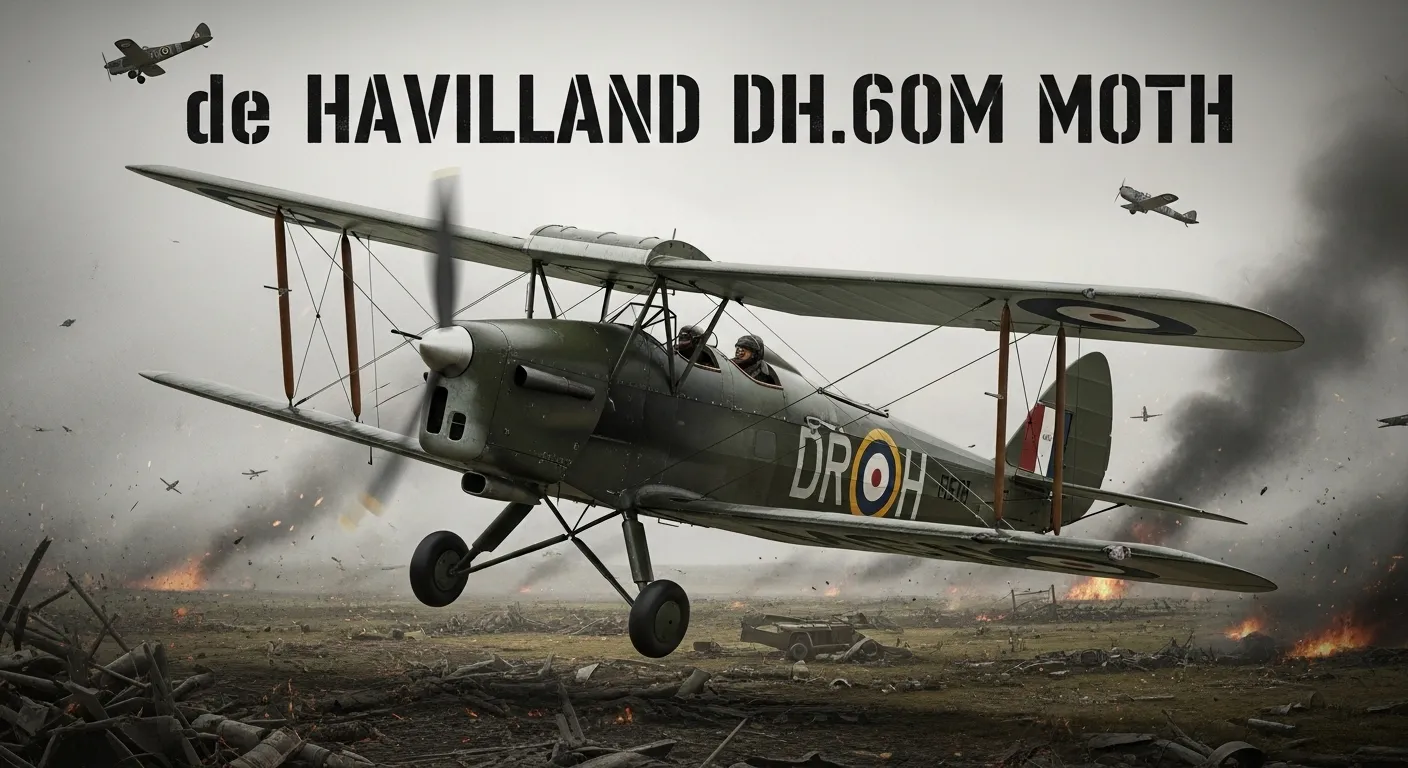
de Havilland DH.60 Moth | |
|---|---|
| Krajiny | Uk |
| Triedy | Tréner |
| Prvý let | 22. februára 1925 |
| Postavený | Neznáme |
Komisia de Havilland DH.60 Moth is a 1920s British two-seat touring and training aircraft that was developed into a series of aircraft by the de Havilland Aircraft Company. The DH.60 was developed from the larger DH.51 biplane. The first flight of the Cirrus powered prototype DH.60 Moth (registration G-EBKT) was carried out by Geoffrey de Havilland at the works airfield at Stag Lane on 22 February 1925. The Moth was a two-seat biplane of wooden construction, it had a plywood covered fuselage and fabric covered surfaces, a standard tailplane with a single tailplane and fin. A useful feature of the design was its folding wings which allowed owners to hangar the aircraft in much smaller spaces. The then Secretary of State for Air Sir Samuel Hoare became interested in the aircraft and the Air Ministry subsidised five flying clubs and equipped them with Moths.
Zdrojový: de Havilland DH.60 Moth na Wikipédii
| DH Gypsy Moth Walk Around | |
|---|---|
| Photographer | Unknow |
| Localisation | Unknow |
| Photos | 18 |
| de Havilland DH.60M Moth Walk Around | |
|---|---|
| Fotograf | Michael Benolkin |
| Lokalizácia | Neznáme |
| Fotografie | 14 |
Pozri tiež:
| De Havilland DH.60G Gipsy Moth Walk Around | |
|---|---|
| Photographer | Mark Hayward |
| Localisation | Unknow |
| Photos | 16 |
Komisia de Havilland DH.60 Moth is a two-seat biplane that was designed and built by the British aircraft manufacturer de Havilland in the 1920s. It was one of the most popular and successful light aircraft of its era, and was used for various purposes such as training, touring, sport flying, and military service. The Moth was based on the earlier de Havilland DH.51, but featured a smaller and lighter airframe, a more powerful engine, and a folding wing mechanism that allowed it to be stored in a standard garage. The Moth was also the first aircraft to use the de Havilland Gipsy engine, a reliable and economical inverted inline four-cylinder engine that became the standard powerplant for many de Havilland designs. The Moth was produced in several variants, such as the DH.60G Gipsy Moth, the DH.60M Metal Moth, the DH.60T Moth Trainer, and the DH.60X Moth Major.
Moth bol vyvezený do mnohých krajín a prevádzkovaný rôznymi civilnými a vojenskými organizáciami, vrátane Royal Air Force, Royal Canadian Air Force a United States Army Air Corps. Moth bol tiež lietaný mnohými slávnymi letcami, ako napríklad Amy Johnson, ktorá letela Gipsy Moth sólo z Anglicka do Austrálie v roku 1930, a Charles Kingsford Smith, ktorý použil Gipsy Moth na prvý trans-tasmánsky let v roku 1928. Moth bolo všestranné a odolné lietadlo, ktoré mohlo dobre fungovať v rôznych podmienkach a prostrediach. Bol chválený za ľahkú manipuláciu, stabilitu a výkon a mnohí piloti ho považovali za radosť lietať. Moth mal tiež vplyv na rozvoj letectva, pretože pomohol popularizovať lietanie ako koníček a šport a inšpiroval mnoho ďalších návrhov ľahkých lietadiel. Moth bol vo výrobe až do roku 1933, kedy bol nahradený de Havilland DH.82 Tiger Moth. Mnohé mory však zostali v prevádzke po celé desaťročia a niektoré stále lietajú dodnes ako drahocenné historické lietadlá.
Počet zobrazení : 2124


